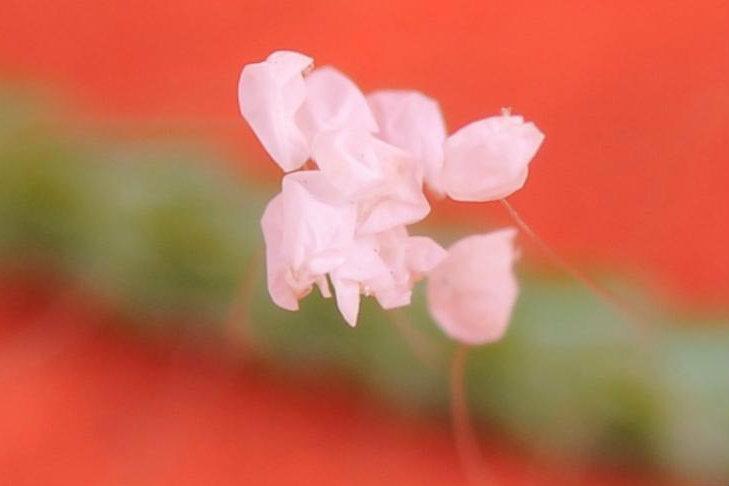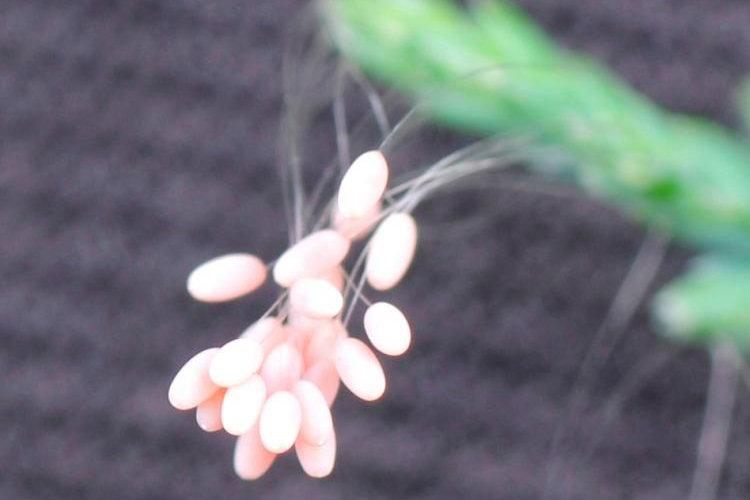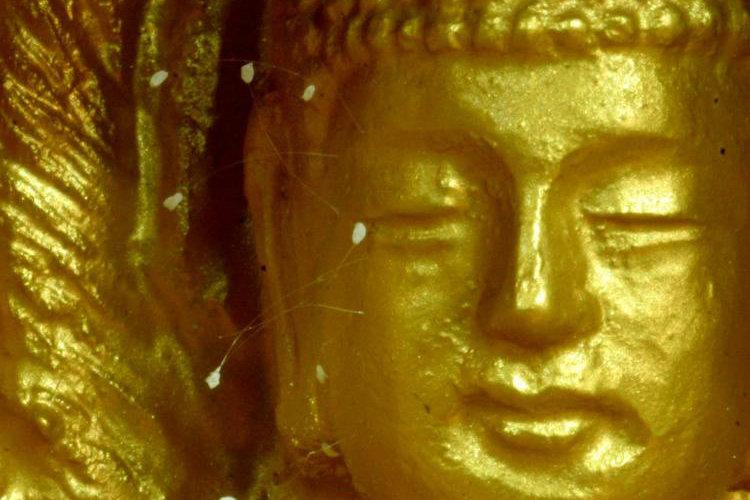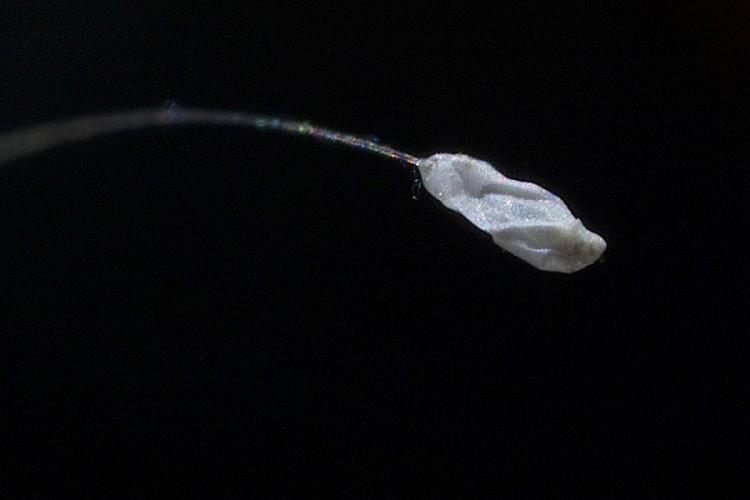The udumbara flower is said in Buddhist legend to bloom only once every 3,000 years, the last time being before the birth of Buddha. Spotted again across the world in the past 20 years or so, some say the udumbara could herald the coming of a great sage or enlightened being.
This very tiny, fragrant flower rests atop a thin stem and is surprisingly resilient. People who’ve found the udumbara in recent years have reported keeping it for long periods of time without it decaying or withering, and even watching it spring back after being crushed.

Udumbara flowers on a pine needle photographed under a microscope by Mr. Li of Malacca, Malaysia.

Green lacewing eggs under a microscope. (Mr. Li)
It was first sighted on a Buddha statue in a South Korean temple in 1997. In 2010, Chinese state-run media surprisingly reported on sightings of the flower, calling it celestial. This is surprising, because the regime is officially atheist and would not usually suggest a great spiritual ruler could arrive on Earth. All articles on state-run media were removed shortly after they were published, but not before they spread across Chinese Internet networks.

The alleged udumbara flowers have been seen blossoming on Buddha statues. (Epoch Times)
The regime has since stated that the udumbara is an insect egg, the egg of a green lacewing. Though the lacewing eggs and the udumbara are similar in appearance, the eggs have been seen to wither and die shortly after hatching whereas the flowers are fragrant and long-lasting.
Udumbara is a word from the ancient Indian language, Sanskrit, meaning “an auspicious flower from heaven.”






